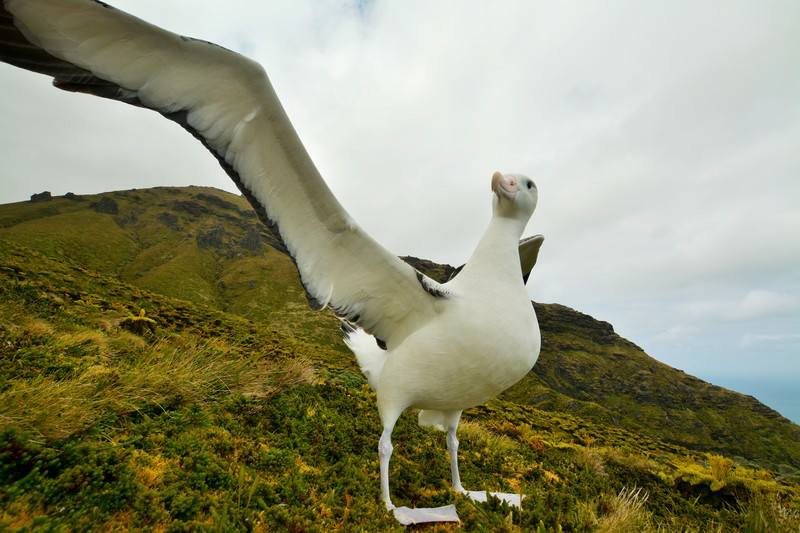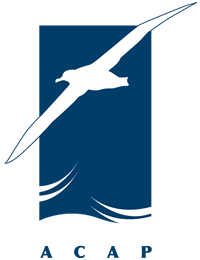 Only one Critically Endangered Tristan Albatross Diomedea dabbenena was analysed for parasites, photograph on Gough Island by Tom McSherry
Only one Critically Endangered Tristan Albatross Diomedea dabbenena was analysed for parasites, photograph on Gough Island by Tom McSherry
Patricia Serafini (Laboratório de Biomarcadores de Contaminação Aquática e Imunoquímica, Universidade Federal de Santa Catarina, Florianópolis, Brazil) and colleagues have published early view and open access in the journal Parasitology on surveying for parasites in southern albatrosses and petrels, including eight ACAP-listed species.
The paper’s abstract follows:
“Emerging infectious diseases pose threats to wildlife, particularly in geographically isolated populations where hosts may lack prior exposure and immunity. Seabirds inhabiting remote islands in the southwest Atlantic and Southern Ocean, including threatened albatrosses and petrels, are increasingly affected by infectious pathogens. However, baseline data on vector-borne infections in these species remain scarce. This study assessed the presence of vector-borne haemosporidian parasites (Plasmodium, Haemoproteus and Leucocytozoon) and bacterial pathogens (Borrelia burgdorferi sensu lato, Anaplasma and Ehrlichia) in albatrosses and petrels, providing insights into disease prevalence and potential threats to these populations. We analysed blood and tissue samples from 269 individuals of 5 albatross and 12 petrel species, collected over an 11-year period (2013–2023) from South Georgia and multiple sites along the Brazilian coastline. Molecular assays, including nested Polymerase Chain Reaction (PCR), were used for pathogen screening. Blood smears from birds sampled in South Georgia were also examined for haemoparasites via light microscopy. We found no molecular or microscopy evidence of infection with haemosporidian parasites, Borrelia, Anaplasma or Ehrlichia in any of the samples. These findings suggest that vector-borne pathogens are either absent or at low prevalence, possibly because of limited vector presence, natural resistance or historical isolation from infection. Continuous monitoring is critical given current environmental changes and risks of pathogen introduction via climate-driven shifts in vector distribution. Our study establishes an essential baseline for future disease surveillance, prevention and mitigation in albatrosses and petrels, underscoring the importance of long-term monitoring to detect emerging pathogens in vulnerable seabird populations.”
With thanks to Richard Phillips and Patricia Serafini.
Reference:
Pereira Serafini P. et al. 2025. Disease surveillance in albatrosses and petrels from the Southwest Atlantic and Southern Ocean. Parasitology, 1-7. doi.org/10.1017/S0031182025100590.
John Cooper, Emeritus Information Officer, Agreement on the Conservation of Albatrosses and Petrels, 30 September 2025

 English
English  Français
Français  Español
Español